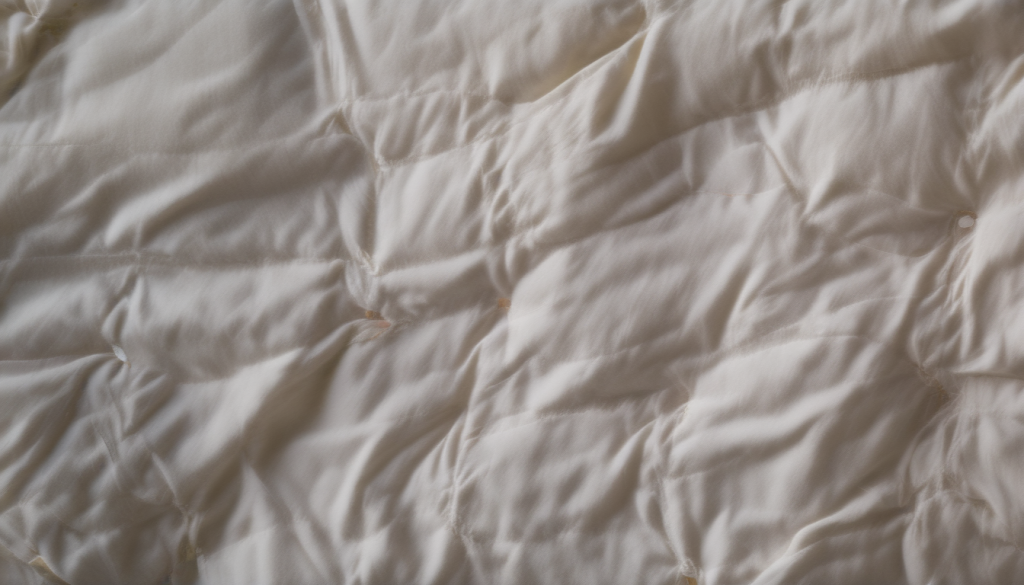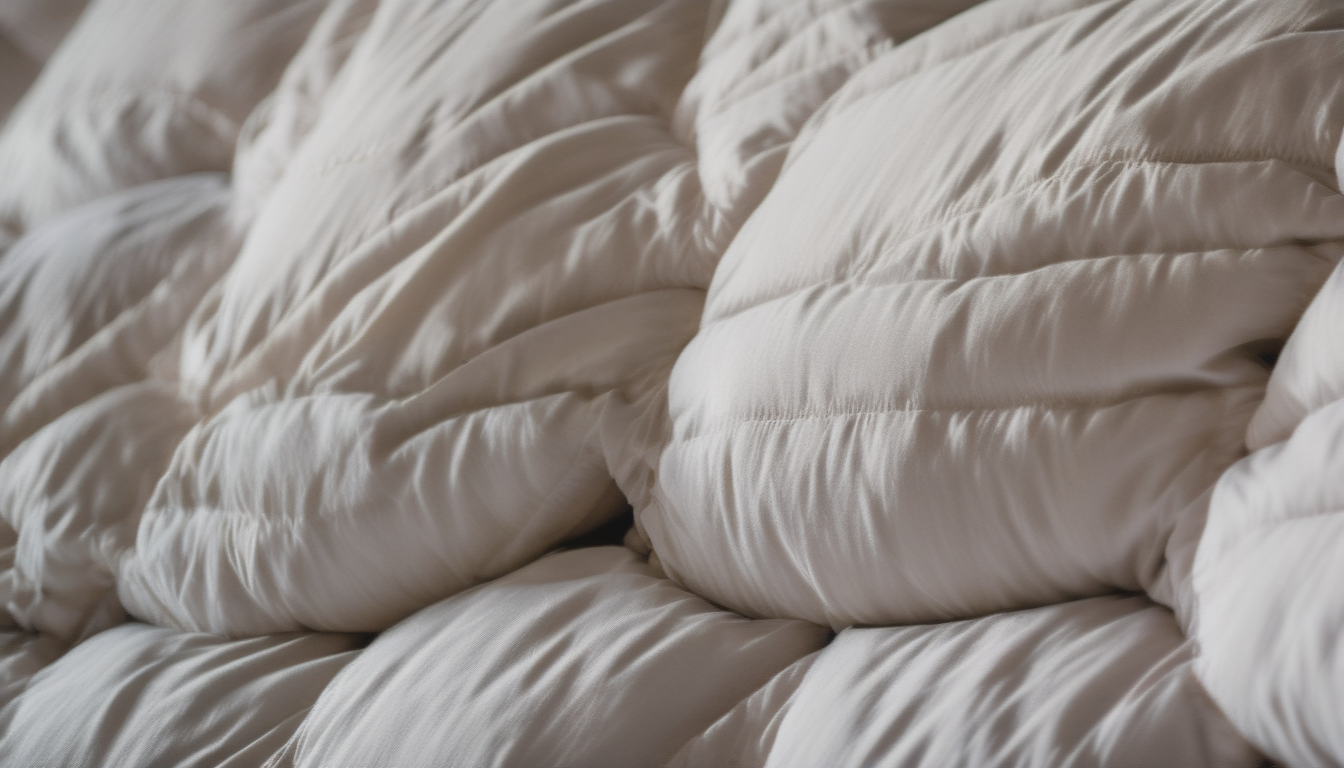For asthma sufferers, bedding choice can have a significant impact on condition management and quality of life. In particular, down comforters remain controversial due to concerns around triggering asthma symptoms. This definitive guide examines the debate and provides evidence-based recommendations for selecting asthma-friendly bedding.
What is Asthma?
Asthma is a chronic lung disease characterized by inflammation and narrowing of airways, causing wheezing, coughing, chest tightness and shortness of breath. It is triggered by exposure to substances called allergens, which cause an immune reaction known as hypersensitivity.
Common asthma triggers include:
- Dust mites
- Pet dander
- Pollen
- Mold
- Irritants like smoke
Asthma severity varies from mild to life-threatening. Ongoing management is required to prevent and treat symptom flare-ups.
The Role of Dust Mites in Asthma
Microscopic house dust mites are a major contributor to asthma. These tiny bugs live in bedding and thrive on skin cells shed by humans.
Dust mite fecal particles act as severe allergens, causing dust mite sensitization which can worsen asthma. High exposure is linked with more severe disease and greater medication needs.
Keeping dust mite levels low is key for asthma control. This makes bedding choice especially important.
Are Down Comforters Safe for Asthma Sufferers?
Down comforters are filled with lightweight, fluffy down feathers from ducks or geese. This natural fill makes them incredibly warm and comfortable.
However, the concern is that down may harbor dust mites. Contact with particles from down inside the duvet may then trigger asthma symptoms.
So should those with asthma avoid down bedding altogether?
The Evidence on Down Comforters and Asthma
Clinical studies on down bedding and asthma have had mixed results:
- A 2010 randomized trial in the Netherlands found no difference in asthma symptoms between synthetic and down bedding.
- However a 1996 study saw improved lung function and reduced medication needs when participants switched to polyester duvets.
There are also isolated case reports of severe lung inflammation conditions like “feather duvet lung” occurring in individuals after prolonged down bedding use.
Overall the evidence suggests down itself does not directly cause asthma, but may exacerbate symptoms in those with dust mite sensitivity.
This means down bedding can be used safely by asthma sufferers in many cases, provided the right precautions are taken.
Tips for Choosing Asthma-Friendly Down Comforters

When selecting an asthma-friendly down duvet, the key is minimizing dust mite allergen levels through smart design choices:
- Allergy safe certification like “Nomite” guarantees highly washable, low dust mite down fill. This stringent standard tests for maximum 50 dust mite allergens per gram of down.
- Dust-proof outer covers create an impenetrable barrier to mite particles escaping from inside. Microfiber fabrics and tightly-woven cotton work well.
- Machine washability makes regular cleaning easy to eliminate mites, reducing exposure over time.
- Breathable, medium density down filling between 600-800 fill power balances warmth with moisture control to inhibit mite growth. Select brands like the AllerRest line engineer their down fills this way.
| Feature | Benefit for Asthma Sufferers |
|---|---|
| Allergy Safe Certification | Guarantees highly washable down with ultra-low dust mite allergens |
| Dust-Proof Outer Shell | Blocks mite particles from escaping and being inhaled |
| Machine Washable | Allows regular cleaning to remove mites |
| Medium Density Down Fill | Balances warmth and breathability to discourage mite growth |
How Do Alternative Bedding Options Compare for Asthma?
For those wishing to avoid down altogether, synthetic and down-alternative options like polyester or Primaloft may be preferable.
Benefits of these hypoallergenic fills include:
- Typically less expensive
- Machine washable
- Inherently hostile to dust mites
- Mimic down warmth and comfort
However, synthetics can retain more heat and moisture compared to quality down. Proper construction is vital to allow ventilation and prevent condensation issues which encourage mite growth. Common problems include:
Mold buildup from excess humidity. This releases spores that further irritate asthma.
Night sweats and overheating. This increases house dust mite feeding.
Cheaper synthetics like polyester can clump over time, creating uneven cold spots. They are also less durable than good down.
The top-rated Pinzon Primaloft Down Alternative Duvet Insert balances effective moisture wicking with soft, billowy warmth rivaling fine goose down. Its reasonable $129.99 price tag makes it a great option for asthma sufferers seeking to avoid feather fills.
Special Considerations for Childhood Asthma
Parents of children with asthma need to take extra care curating a bedroom environment that minimizes asthma triggers.
Along with a hypoallergenic duvet, additional tips include:
- Wash bedding weekly in hot water to kill dust mites
- Choose allergen-proof mattress and pillow encasements
- Use washable synthetic stuffed toys instead of fabric ones
- Install a dehumidifier to keep bedroom humidity under 50%
Creating an asthma-friendly sleep sanctuary supports better symptom control and quality of life for the child.
The Bottom Line: Yes, With Precautions

So can those with asthma safely use down-filled bedding? The answer is yes – provided proper selection criteria are followed. Prioritize certification standards, barrier fabrics and smart construction aimed at discouraging dust mite infestation through moisture control and easy washing.
With reasonable precautions taken, both down-alternative and well-engineered down comforters can create a warm, welcoming and asthma-friendly sleep environment. The result is better rest, fewer nighttime symptoms like coughing or wheezing, and improved daily condition management.
Frequently Asked Questions
Are down comforters safe if I have asthma?
Yes, down comforters can be safe for asthma sufferers if care is taken to select options engineered to prevent dust mite growth through allergen-proof outer layers, medium density fills and easy washability. Certifications like Nomite also guarantee low allergen levels.
What fill power is best for asthma?
For down comforters, a medium fill power between 600-800 balances warmth with breathability. This prevents excessive moisture buildup inside the duvet which can encourage dust mites. Very high fill power down above 900FP runs hottest and requires more careful humidity control.
Should I get a down alternative duvet insert?
Down alternative fills like primaloft or polyester avoid down-related allergy issues entirely, making them a smart choice for improved asthma control. Look for quality materials with moisture-wicking properties to prevent problems like mold growth or night sweats. The Pinzon Primaloft Down Alternative Duvet Insert is a top choice.
What thread count is best?
For downproof duvet covers, a tightly-woven cotton or microfiber fabric with a thread count over 200 is optimal to block dust mite particles from escaping the inner chamber of the comforter. This prevents exposure leading to asthma irritation.
Can you wash down comforters?
Proper asthma care requires washing your down duvet several times per year to sanitize and remove allergens. Always verify the comforter exterior AND interior fill are machine washable before purchasing. Tumble dry on low afterwards to restore fluffiness.
What colors hide dust mites?
Darker duvet colors like navy blue naturally disguise dust mites and their waste particles better than light shades. This reduces visible accumulation so you don’t have to clean as often. White bedding shows everything and requires more frequent, diligent washing.
Are goose down comforters better?
Both duck and goose down work well. Goose down is warmer by weight than duck due to larger cluster sizes trapping more air. But larger clusters may shelter more dust mites. Well-constructed allergen-resistant duck down with certification can be preferable for asthma.








